Picture this: you’re driving through EDSA on a hot summer’s day. You’re currently in the middle of Cubao. Traffic is tight and barely moving, then you decide to crank up your car’s air conditioning system because it’s almost noon.
To your surprise, instead of getting cooler air, room temperature air blows on your face. You decide to wait, but after a few minutes, the temperature inside your car didn’t change, and the compressor is quieter than usual.

Drivers with pre-existing conditions should also watch out for a hot car interior
If you rule out other car air-conditioning problems, then those described above are signs that your car might need an aircon Freon refill. But what even is Freon?
1. What is Freon?
Freon is a gas known as R-22. As for the Freon name itself, it’s actually a brand trademarked by Dupont, an American chemical company based in Delaware.
Now, Freon is a refrigerant and is the gas that absorbs the heat coming from your A/C unit’s coils and compressors. It changes from gas to liquid during this cycle of absorbing hot air and then produces cooler air in the process.
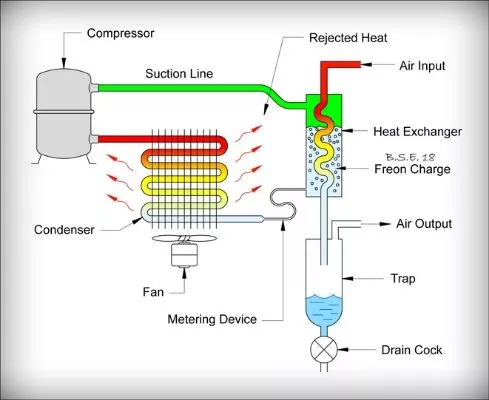
Here's a diagram of an AC system showing how Freon works
When an A/C unit leaks and loses aircon refrigerant (the Freon), then the AC stops producing cold air. What’s worse is that when it escapes, Freon is actually a very harmful gas to the ozone layer.
2. Aircon Freon Charging in the Philippines
Here in the Philippines, there are a lot of automotive services that focus on fixing car A/C issues. And one of those issues is low Freon levels.
If you followed our Aircon Cleaning Service article, then you’ll have read a list of our recommended shops located around Metro Manila, as well as several in Cebu.
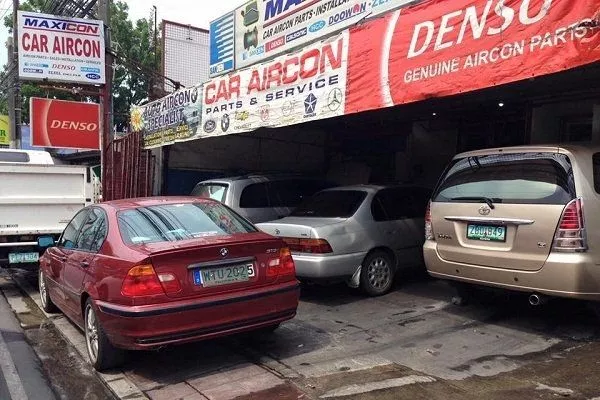
If you don't want to go to Banawe, QC, then Google Maps is your friend
When it comes to aircon freon refill cost in the Philippines, it may vary from Php 800 to Php 1,500. This is because some shops will actually attempt to find the cause of the Freon leak using UV dyes.
Other, cheaper options will simply recharge your car A/C’s Freon – a temporary fix as it will likely leak again.
3. Aircon Freon Price in the Philippines
If you want to do aircon freon charging by yourself, then you’ll need these tools and supplies and hence, the respective prices of those will be as below:
Freon
There are two ways to buy your Freon here in the Philippines. First is buying an empty canister rated specifically to contain Freon. This will cost you from Php 600 to Php 1,500 depending on the capacity and quality of the tank.
You can then go to a local chemical shop or an air-conditioning specialist shop where they will charge you an average of Php 280 per kilo.
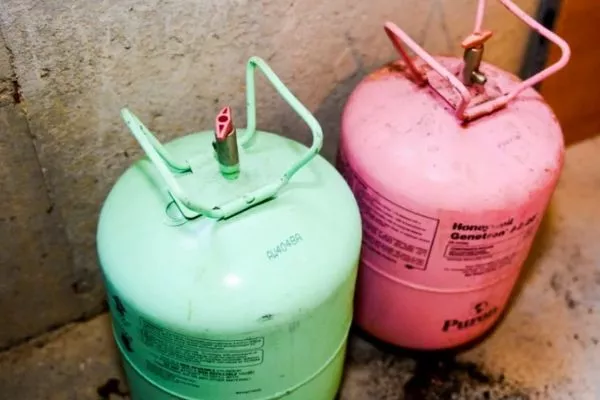
A tank of Freon looks like this but this is probably too much for a DIY project
Another method is to buy smaller R22 (Freon) canisters already filled with Freon. These range from Php 879 to Php 1,050 depending on the size.
Note, though, that a typical automotive air-conditioning system only uses around 1.3 kg to 1.8 kg of Freon so this might be a more economical option for car owners.
Freon Gauges
Freon gauges, which are more accurately known as A/C Diagnostic Manifold Gauge, typically range from Php 900 to Php 3,000 depending on the brand. If you want a fancier, albeit more accurate refrigerant gauge, then you might want to consider a digital A/C Diagnostic Manifold Gauge. Of note, this tool is expensive as it will cost you about Php 6,000 to Php 8,000.
A/C Pro
A third option if you want to go DIY is buying an AC Pro AC recharge kit. This costs around Php 1,570 to Php 2,000 depending on the store you’re getting it from. Note, though, that A/C Pro canisters are kind of hard to look for here in the Philippines, so you might want to order online.
Notes:
- There are many kinds of refrigerants aside from R22. There’s the R410A which is friendlier to the environment, and the A/C Pro itself uses R-134a Freon. To make sure that the kind of Freon is compatible with your car’s A/C, consult your dealership, your friendly neighborhood car A/C shop, or you can also do your own research on your car.
- Cars made before 1995 used R12 Freon. As such, these are incompatible with the types of Freon we’ve mentioned above. Also, it’s very hard to find R12 refrigerant nowadays, so one option is AC replacement.
>>> Related: List of popular car aircon repair shops in the Philippines
4. How to put Freon in a car with gauges
With regards to how to add Freon to a car’s A/C system by yourself, you can do this correctly by following these steps:
Step #1.
Turn on your car, turn on the A/C, and then set it to the maximum.
Step #2.
Next, determine if your A/C compressor is engaging. This can be checked visually by popping open your hood. Your A/C compressor is driven by a belt. If it’s moving, then it’s engaging and pumping refrigerant (Freon); if it’s not, then the A/C compressor is the reason as to why your A/C isn’t working.
Step #3.
If the A/C compressor is engaging despite the lack of cool air, then that will confirm that your car needs refrigerant. If the compressor clutch isn’t engaging, then it might be an electrical problem.
Step #4.
Moving on, you should then check the pressure. Do this by turning off your vehicle, and then hanging your Freon gauge under your hood, just above the compressor. Next, locate the low side pressure, open its cap, and then connect it with the blue gauge with the blue hose.
Next, find the high side pressure, open its cap, and then link it with the red Freon Gauge red hose. Typically, the caps covering the low pressure and high-pressure service ports are either marked by an “L” for low, and an “H” for high. Do not pull the Gauge trigger at this time as it might spill Freon all over.
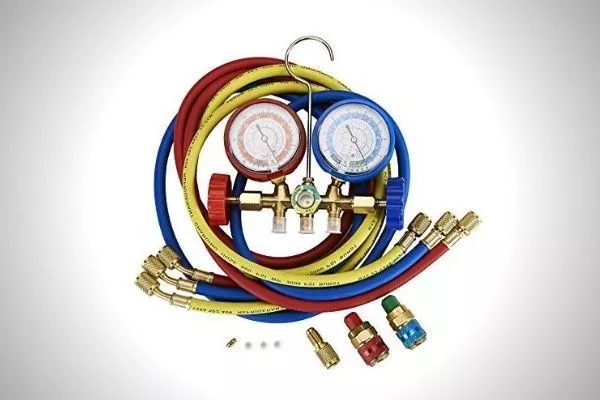
Freon gauges look like this. Note the colors of the pipes
Step #5.
Restart your car, and then turn on its A/C system on maximum. Monitor the gauge. If the compressor engages, you’ll then get a pressure reading. If it’s under 40 psi, then the A/C system is undercharged and will need Freon.
Step #6.
If you bought the Freon gauges, then thread the Freon tank on. This will allow you to load up Freon slowly to your car’s A/C system.
Don’t forget to hold the can or tank upright, and/or squeeze its trigger (for AC Pro) for five to ten seconds. Once you release the trigger, check the gauge and wait until it reaches closer to 40 psi.
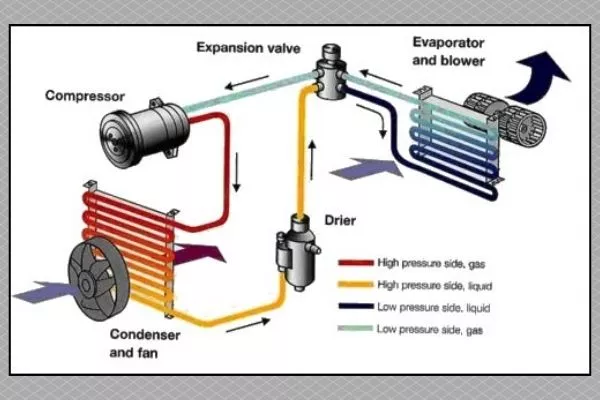
If you can't find the low/high pressure lines, then refer to this diagram
Step #7.
Go back inside your car. If it’s cooler, then congratulations.
Step #8.
Note though that if the pressure is over 40 psi even before you started, then you might want to look for a professional mechanic.
>>> Related: List of 10 most trusted auto services centers & repair shops in the Philippines
5. Note on DIY Aircon Freon refills
It should be stated that if your car A/C’s Freon was indeed low, it can be attributed to a leak. If you want to address the leak, and therefore fix the problem in a more permanent capacity, then you’ll want to go to a professional A/C specialist to properly address the problem.
DIY refilling freon in car can be good, but there are times that a job will require a professional touch. Freon is a hydrofluorocarbon, which is dangerous to the environment.
Accidentally inhaling Freon can also cause headaches, dizziness, and your heart rate will also increase.
And lastly, mucous membranes such as your eyes and the insides of your nose will become painful. The worst case scenario when inhaling Freon is that it’ll cut off the oxygen supply from your lungs, leaving you unconscious.
For more automotive repair guides like this one, keep reading here on Philkotse.com.
Recent posts
- What are the car brands with the best aircon? Dec 23, 2022
- A complete guide to the Car Aircon Parts & How they work. Mar 10, 2021
- 9 steps to identify and solve potential problems in your car aircon system Aug 17, 2022
- 8 steps to eliminate odor from your car aircon system Aug 17, 2022
- Must-know tips for every Filipino driver to do a proper car aircon cleaning Apr 17, 2020












